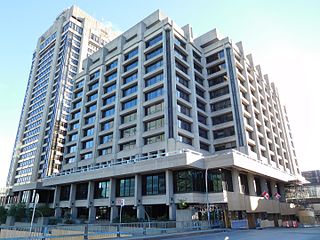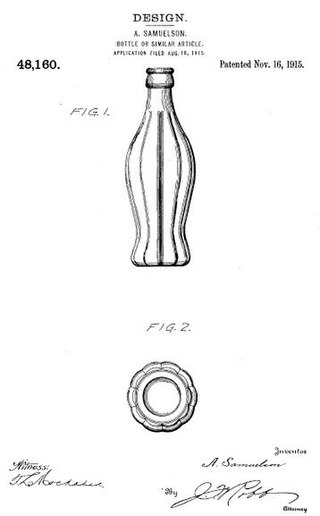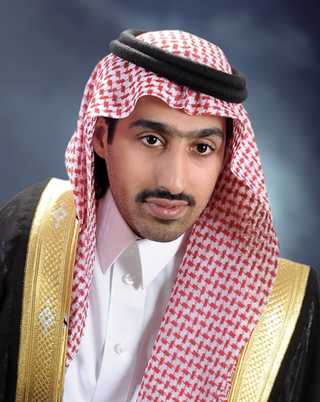Related Research Articles
A software patent is a patent on a piece of software, such as a computer program, libraries, user interface, or algorithm.

An industrial design right is an intellectual property right that protects the visual design of objects that are purely utilitarian. An industrial design consists of the creation of a shape, configuration or composition of pattern or color, or combination of pattern and color in three-dimensional form containing aesthetic value. An industrial design can be a two- or three-dimensional pattern used to produce a product, industrial commodity or handicraft.
The Paris Convention for the Protection of Industrial Property, signed in Paris, France, on 20 March 1883, was one of the first intellectual property treaties. It established a Union for the protection of industrial property. The convention is still in force in 2023. The substantive provisions of the Convention fall into three main categories: national treatment, priority right and common rules.
A patent attorney is an attorney who has the specialized qualifications necessary for representing clients in obtaining patents and acting in all matters and procedures relating to patent law and practice, such as filing patent applications and oppositions to granted patents.

Industrial property is one of two subsets of intellectual property, it takes a range of forms, including patents for inventions, industrial designs, trademarks, service marks, layout-designs of integrated circuits, commercial names and designations, geographical indications and protection against unfair competition. In some cases, aspects of an intellectual creation, although present, are less clearly defined. The object of industrial property consists of signs conveying information, in particular to consumers, regarding products and services offered on the market. Protection is directed against unauthorized use of such signs that could mislead consumers, and against misleading practices in general.

The Canadian Intellectual Property Office is responsible for the administration and processing of the greater part of intellectual property (IP) in Canada. CIPO's areas of activity include patents, trademarks, copyright, industrial designs and integrated circuit topographies. Structurally, CIPO functions as a special operating agency (SOA) under Innovation, Science and Economic Development Canada. CIPO is based in Gatineau, Quebec, part of the National Capital Region. CIPO’s current interim Chief Executive Officer is Konstantinos Georgaras.
Intellectual property rights (IPRs) have been acknowledged and protected in China since 1980. China has acceded to the major international conventions on protection of rights to intellectual property. Domestically, protection of intellectual property law has also been established by government legislation, administrative regulations, and decrees in the areas of trademark, copyright, and patent.

In the United States, a design patent is a form of legal protection granted to the ornamental design of an article of manufacture. Design patents are a type of industrial design right. Ornamental designs of jewelry, furniture, beverage containers and computer icons are examples of objects that are covered by design patents.

King Abdulaziz City for Science and Technology in Riyadh, Saudi Arabia is a governmental organization established in 1977 as the Saudi Arabian National Center for Science & Technology (SANCST); in 1985, it was renamed King Abdulaziz City for Science and Technology.

A utility model is a patent-like intellectual property right to protect inventions. This type of right is available in many countries but, notably, not in the United States, United Kingdom or Canada. Although a utility model is similar to a patent, it is generally cheaper to obtain and maintain, has a shorter term, shorter grant lag, and less stringent patentability requirements. In some countries, it is only available for inventions in certain fields of technology and/or only for products. Utility models can be described as second-class patents.
The GCC Patent Office (GCCPO) is a regional patent office based in Riyadh, Saudi Arabia, within the Secretariat General of the Gulf Cooperation Council (GCC). The GCC consists of six member countries: Bahrain, Kuwait, Oman, Qatar, Saudi Arabia, and the United Arab Emirates (UAE). In 2013, it employed about 30 patent examiners.

The Organisation Africaine de la Propriété Intellectuelle or OAPI is an intellectual property organization, headquartered in Yaoundé, Cameroon. The organisation was created by Bangui Agreement of March 2, 1977. The Bangui Agreement was subsequently amended in 1999.
The laws of Thailand are based on the civil law, but have been influenced by common law.
World Intellectual Property Indicators (WIPI) is an annual statistical report published by the World Intellectual Property Organization (WIPO). The publication provides an overview of the activity in the areas of patents, utility models, trademarks, industrial designs, microorganisms, plant variety protection, geographical indications and the creative economy.

Iran is a member of the WIPO since 2001 and has acceded to several WIPO intellectual property treaties. Iran joined the Convention for the Protection of Industrial Property in 1959. In December 2003 Iran became a party to the Madrid Agreement and the Madrid Protocol for the International Registration of Marks. In 2005 Iran joined the Lisbon Agreement for the Protection of Appellations of Origin and their International Registration, which ensures the protection of geographical names associated with products. As at February 2008 Iran had yet to accede to The Hague Agreement for the Protection of Industrial Designs.
Registration of intellectual property in Ghana is key to safeguarding one's intellectual efforts from infringement. Intellectual property law of Ghana encompasses intellectual property (IP) laws in Ghana, such as laws governing copyright, patent, trademark, industrial design rights, and unfair competition. The main intellectual property laws in Ghana include the Copyright Act, 2005, the Patents Act, 2003, the Trademarks Act, 2004, the Industrial Designs Act, 2003 and the Protection Against Unfair Competition Act, 2000. These are supplemented by regulations passed by the Legislature to augment the rate of development under IP laws.
The Industrial Designs Act, 2003 is a Ghanaian act to revise the enactments on the protection of industrial designs and to provide for related matters. The Act is one of the Seven Acts that exist to protect Intellectual Property Rights in Ghana namely; Protection against Unfair Competition Act, 2000 ; Industrial Designs Act, 2003 ; Geographical Indications Act, 2003 ; Patents Act, 2003 ; Trademarks Act, 2004 ; Layout-Designs (Topographies) of Integrated Circuits Act, 2004 and Copyrights Act, 2005.
The Saudi Authority for Intellectual Property (SAIP) is an official government body in Saudi Arabia responsible for the protection and supporting the intellectual property in the Kingdom.

Mohammed Ahmad S Al-Shamsi is known for his work as an inventor, professor, and a formal delegate in Saudi Missions in selected United Nations meetings and agreements since 2013 such as Climate Summit, United Nations Framework Convention on Climate Change (UNFCCC), Paris Agreement of 2015, and Intergovernmental Panel on Climate Change (IPCC). He has worked to protect the Saudi interests in the international negotiations. He also was a formal representative of King Abdulaziz City for Science & Technology (KACST) in several international forums such as East Africa Environmental Risk & Opportunities Summit and The meeting of The Global Leaders of Innovation Funders.
Intellectual property of Ethiopia is managed by the Ethiopian Intellectual Property Office (EIFO), who oversees Intellectual Property Right (IPR) issues. Ethiopia has not signed IPR treaty such as the Paris Convention for the Protection of Industrial Property, the World Intellectual Property Organization (WIPO) copyright treaty, the Berne Convention for Literary and Artistic Works, the Madrid System for the International Registration of Marks, and the Patent Cooperation Treaty.
References
- ↑ "Saudi Patent Office SPO-directors". www.kacst.edu.sa. Retrieved 2019-03-10.
- 1 2 3 "Saudi Patent Office About". www.kacst.edu.sa. Retrieved 2019-03-10.
- ↑ "Implementing Regulations of the Law of Patents, Layout Designs of Integrated Circuits, Plant Varieties,,and Industrial Designs" (PDF). Saudi Authority for Intellectual Property. Retrieved 10 March 2019.
- 1 2 "Saudi Patent Office Statistics". www.kacst.edu.sa. Archived from the original on 2020-08-01. Retrieved 2019-03-10.
- ↑ "KSA ranks 23rd in number of patents granted by the US Patent and Trademark Office". Arab News. 2018-04-17. Retrieved 2019-03-10.
- ↑ "Saudi Arabia Granted 664 Patents in 2017; Double of All Arab Countries Combined". Business Wire. 2018-04-16. Retrieved 2019-03-10.
- ↑ Debusmann, Bernd Jr. "Saudi Arabia leads Arab world in patents". ArabianBusiness.com. Retrieved 2019-03-10.
